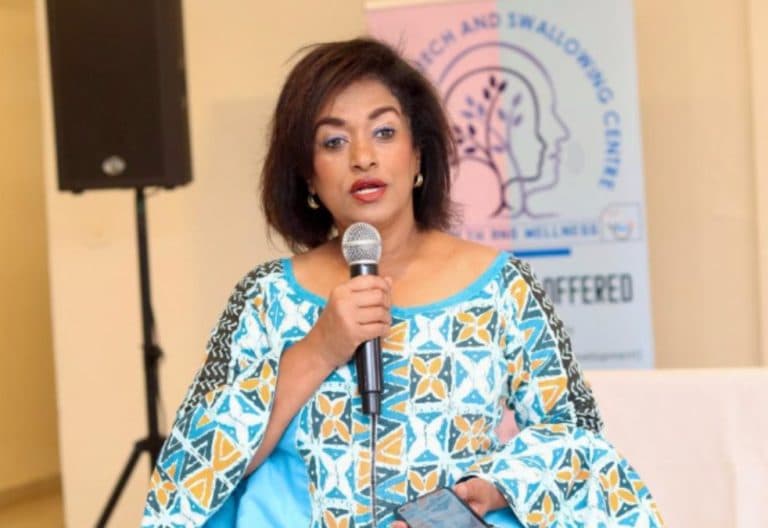Loading News Article...
We're loading the full news article for you. This includes the article content, images, author information, and related articles.
We're loading the full news article for you. This includes the article content, images, author information, and related articles.
Nairobi Woman Representative Esther Passaris has endorsed President William Ruto's ambitious infrastructure agenda, arguing it provides a necessary foundation for Kenya's long-term economic prosperity and aligns with established development principles.

Nairobi Woman Representative Esther Passaris has publicly supported President William Ruto’s comprehensive KSh 5 trillion infrastructure development plan, framing it as a crucial strategy for securing Kenya's future economic stability. In a statement released on Friday, November 21, 2025, Passaris praised the president's vision, which was detailed during his State of the Nation address the previous day. She asserted that strategic, long-term investment in foundational sectors is essential for sustainable national growth.
Passaris's endorsement came in response to the president's address on Thursday, November 20, 2025, where he unveiled a sweeping 10-year agenda aimed at transforming Kenya's economic landscape. The plan prioritizes the expansion and modernization of transport and logistics, energy, agriculture, and digital networks. Key projects highlighted include the dualling of 2,500 kilometres of major highways, tarmacking an additional 28,000 kilometres of roads, and extending the Standard Gauge Railway (SGR) from Naivasha to the Malaba border.
President Ruto's administration has positioned the multi-trillion-shilling plan as a cornerstone of its strategy to enhance regional trade and lower the cost of doing business. Among the immediate priorities is the dualling of the critical Rironi–Naivasha–Nakuru–Mau Summit corridor, a project the president announced he would launch in the coming week. Other significant road projects include the expansion of vital trade routes such as Mau Summit–Eldoret–Malaba, Kisumu–Busia, and Athi River–Namanga.
A major component of the agenda is the long-awaited extension of the SGR, with construction from Naivasha through Kisumu to Malaba scheduled to begin in January 2026. This is expected to bolster Kenya's position as a key logistics hub for East and Central Africa, improving connectivity with Uganda, Rwanda, South Sudan, and the Democratic Republic of Congo. The plan also includes the modernization of Jomo Kenyatta International Airport (JKIA) and the ports of Mombasa and Lamu through public-private partnerships (PPPs).
In her statement, Passaris drew parallels with Japan's post-war reconstruction, noting its dramatic expansion of paved roads was central to its economic transformation. “Japan rebuilt from just 2,000 km of paved roads after the war to over 1.1 million km today. Because infrastructure is destiny. Kenya cannot grow without expanding our roads, energy, water, irrigation, digital networks, and housing,” she stated.
The ambitious plan has raised significant questions about its financing, particularly in light of Kenya's strained fiscal environment and rising public debt. As of September 2025, the national debt stood at KSh 12.05 trillion, with other reports in November placing it at KSh 12.5 trillion. Debt servicing costs are projected to consume a substantial portion of national revenue, limiting funds for other essential services.
President Ruto has indicated a shift away from debt-funded projects, which have historically driven infrastructure development in Kenya. Instead, the administration plans to finance these capital-intensive projects through a proposed National Infrastructure Fund (NIF) and a Sovereign Wealth Fund (SWF). These funds are expected to draw capital from the privatization of state-owned enterprises and private investment through PPPs. Passaris endorsed this approach, referencing countries like Norway and the UAE that utilized sovereign wealth funds to secure long-term prosperity.
However, the plan is not without its critics. Some observers have questioned the feasibility of raising the required KSh 5 trillion amid economic pressures. There are also concerns about the timing and prioritization of such large-scale projects when many Kenyans are grappling with the high cost of living. Past infrastructure projects have also faced criticism, with some accusing the administration of relaunching projects initiated by previous governments.
The infrastructure push is aligned with Kenya's long-term development blueprint, Vision 2030, which aims to transform the nation into a newly industrializing, middle-income country. Projects like the LAPSSET (Lamu Port-South Sudan-Ethiopia Transport) corridor are central to this vision, seeking to open up new trade routes and spur economic growth in underserved regions. The completion of such projects is seen as critical for enhancing regional integration and solidifying Kenya's role as an economic powerhouse in East Africa.
Passaris, a member of the opposition Azimio coalition, framed her support for the president's agenda as a matter of principle, aligning it with the development ethos she attributed to veteran opposition leader Raila Odinga. Her stance underscores a complex political dynamic where development agendas can sometimes transcend partisan lines, even as criticism and debate over implementation and fiscal responsibility continue. The ultimate success of this ambitious infrastructure plan will depend on the government's ability to secure sustainable financing, manage public debt, and deliver tangible economic benefits to the Kenyan people.